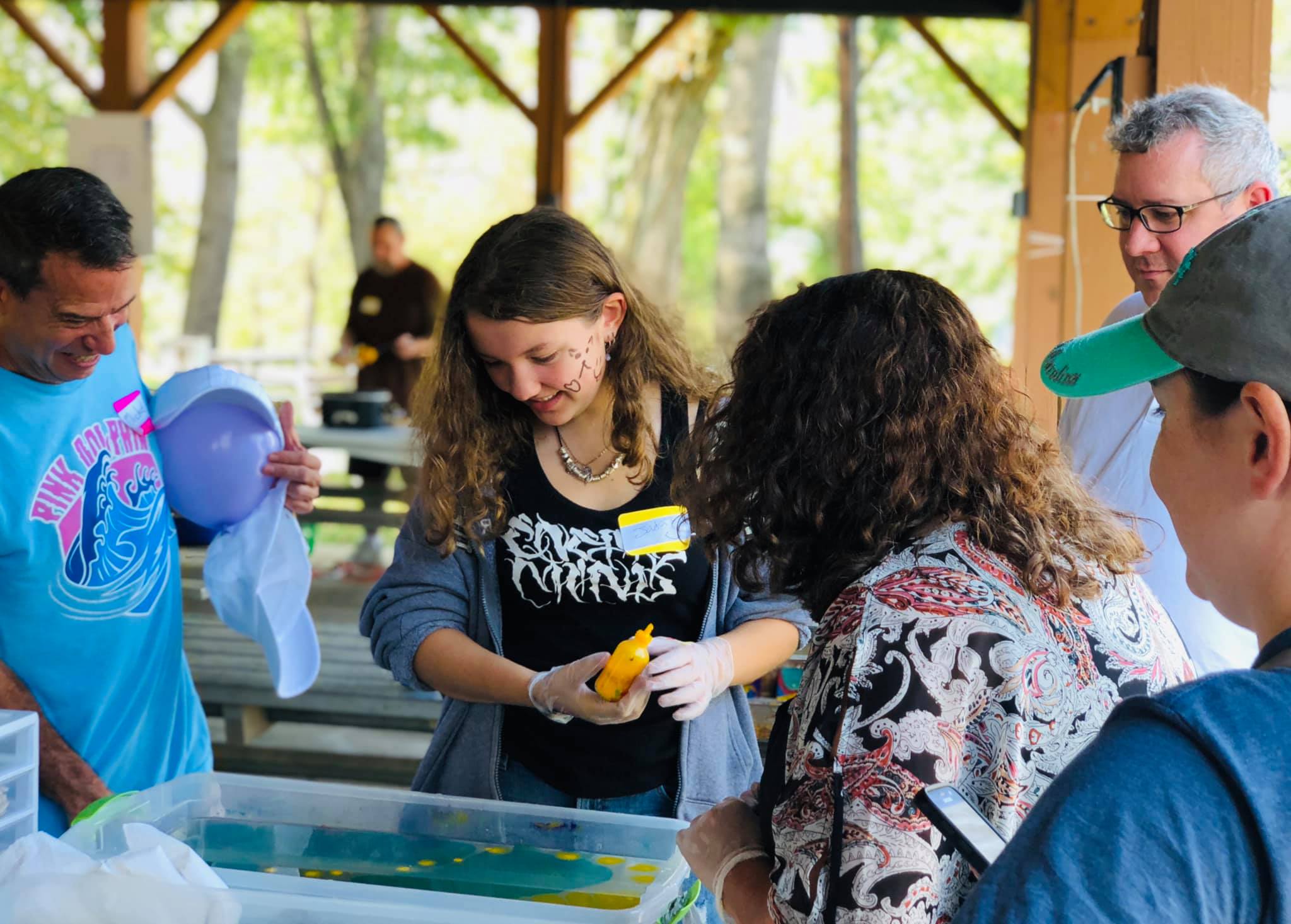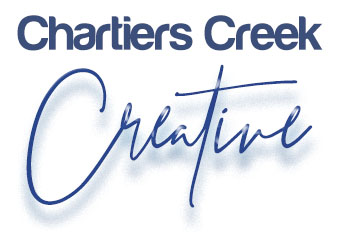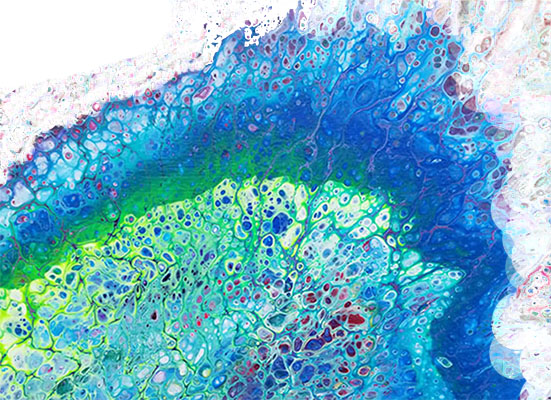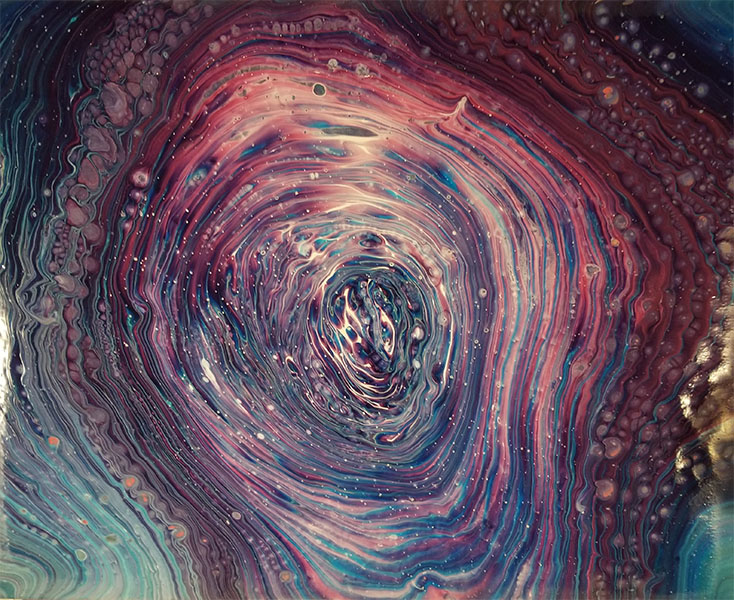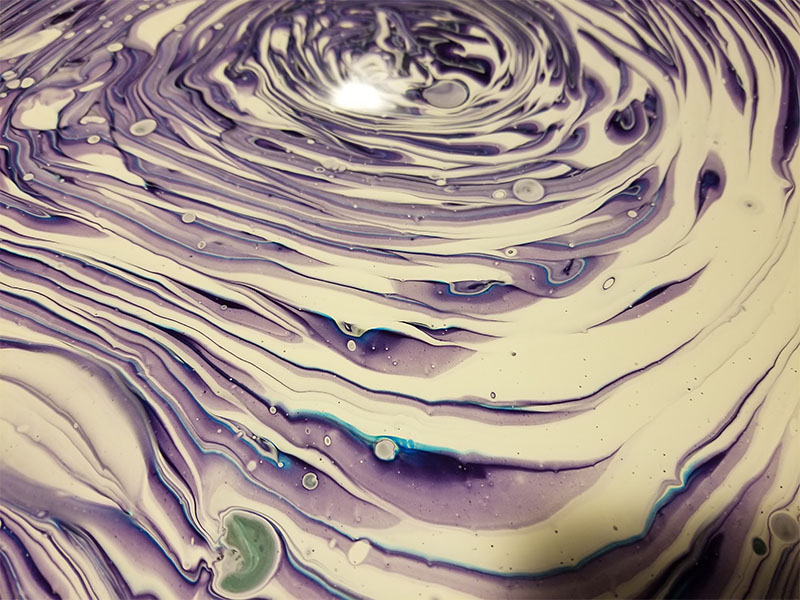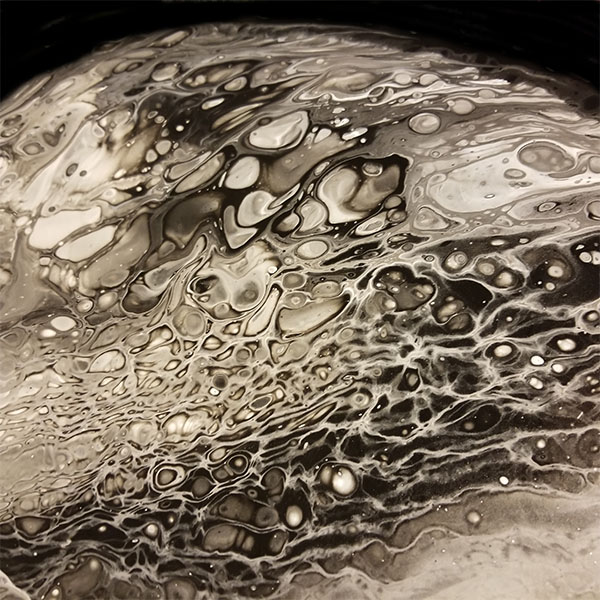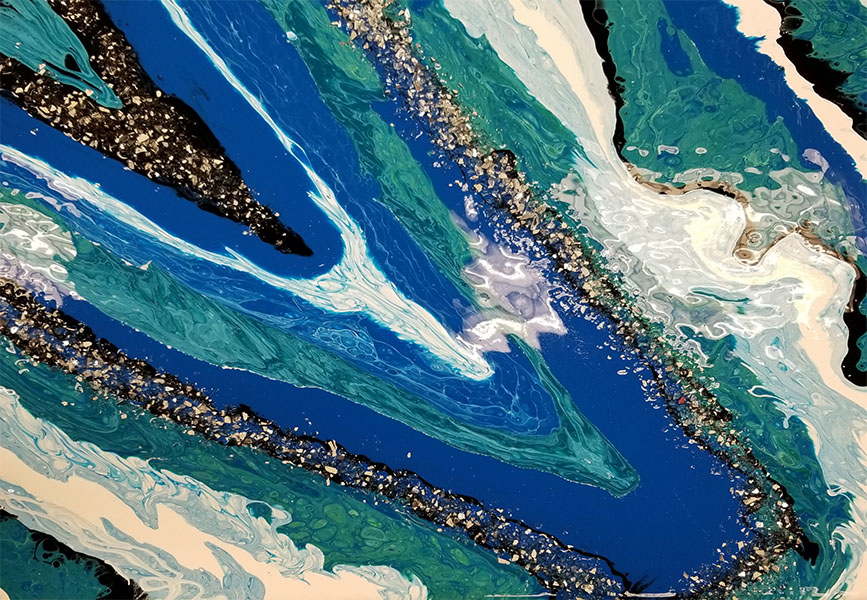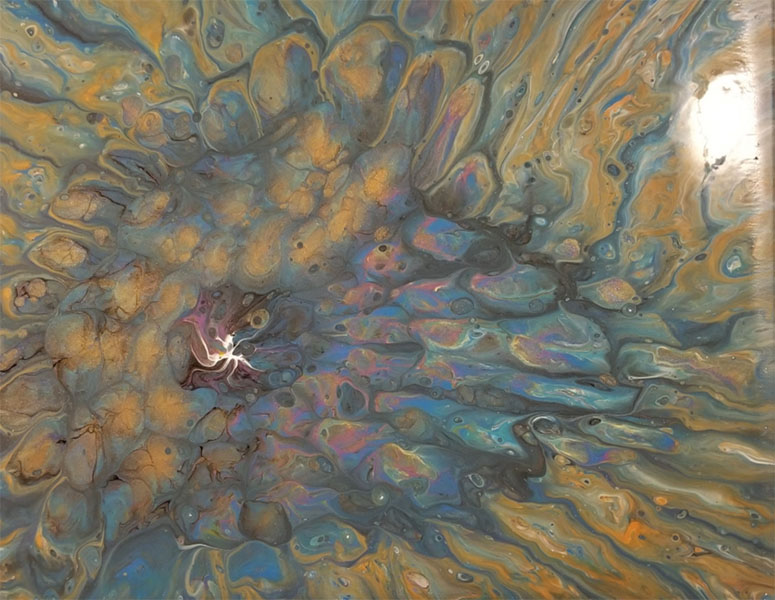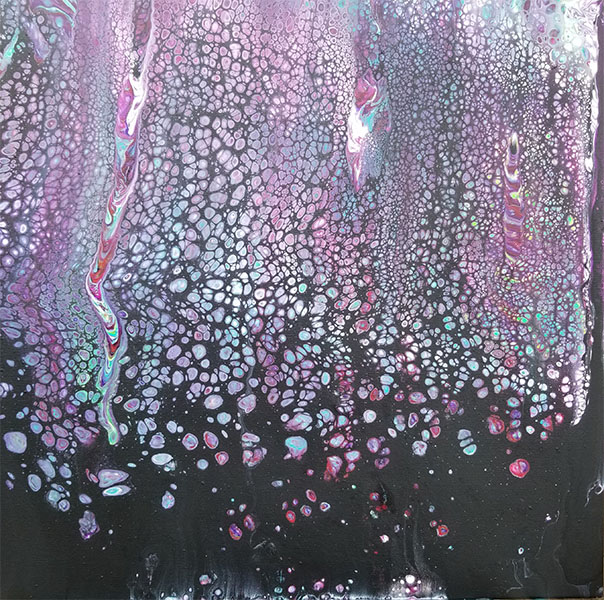Geode Pour
With Glass and Texture
The geode pour can resemble almost any geode that you like, or it can be a new thing that you create from your imagination. It can also be from any perspective, such as a geode slice (like here, in this example by one of our participants), or it can be from a bird's eye view, or any other perspective you might come up with.
In this class, we walk together, step by step, to mix your own custom colors before adding the geode layers to the canvas one at a time, ending with glass and other texture elements for a realistic geode crust. The end result is a dazzling geode on canvas that will be a lifelong treasure.
